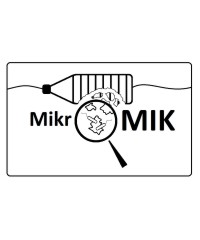Composition and distribution of microplastic in the Baltic Sea

During the first 2 years of the project, we intend to collect as many sediment and plankton samples as possible, to obtain a comprehensive dataset for the abundance and polymer composition of microplastic particles in the Baltic Sea. Our sampling area will range from the Warnow to the Gulf of Bothnia.
Sediment will be sampled using a Van Veen Grab Sampler and stored in glas containers. The separation of microplastic from sediment will be carried out with the MicroPlastic Sediment Separator (Imhoff et al., 2012). This method enables recovery rates of >95% even for particles smaller than 1 mm.

Surface water will be sampled using a Bongo net with a double net ring, with one 500 µm and one 100 µm pore sized net.
The microplastic extraction from sediment after treatment in the MPSS, as well as from plankton samples, will follow a complex procedure including mechanical, enzymatic and chemical steps, in order to gain microplastic samples free of biotic substances. A subsequent identification of the plastic polymers will be achieved using FTIR- or Raman spectroscopy.
The whole sampling and analysis procedure will be kept as plastic-free as possible, to avoid contamination.

